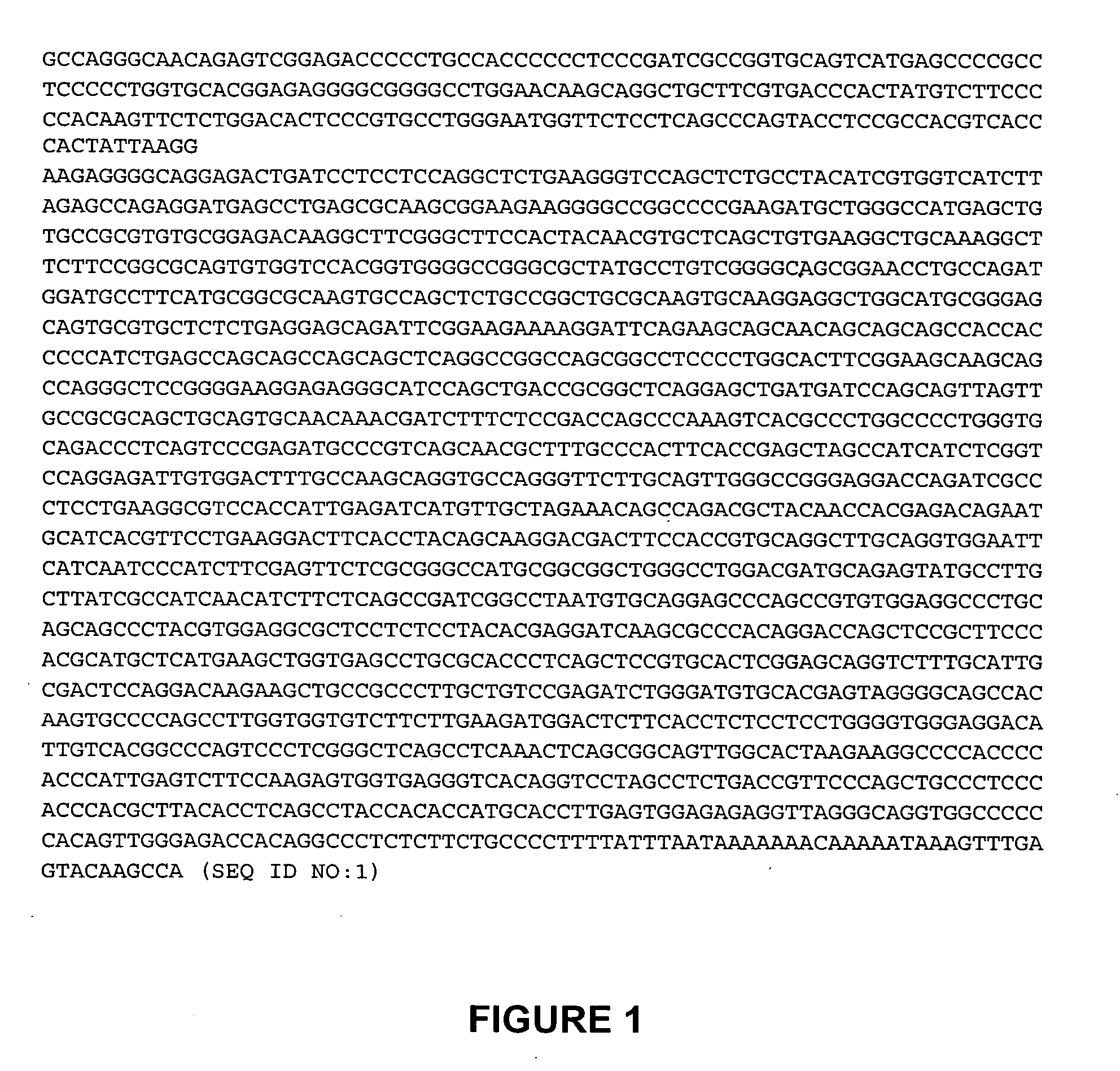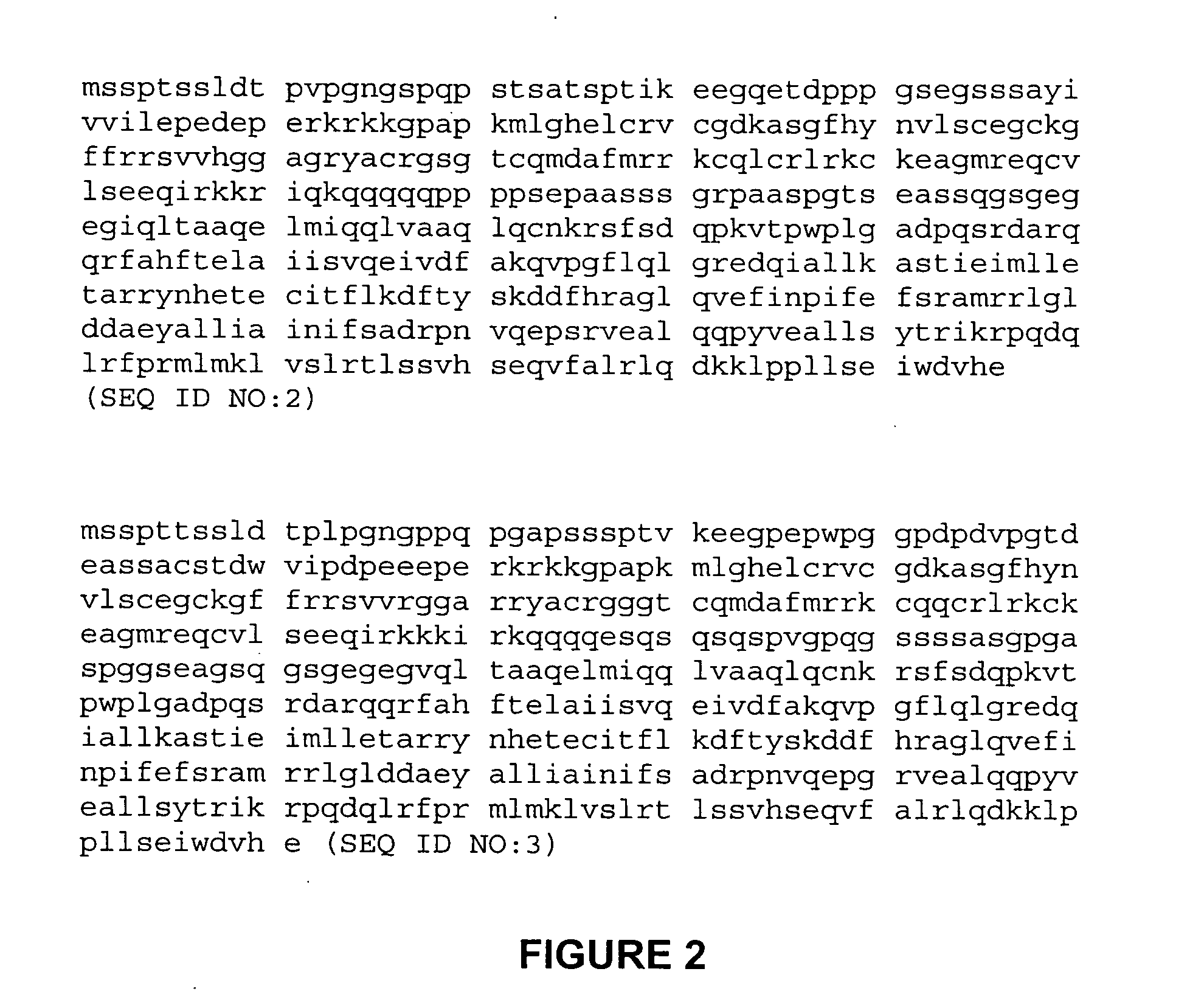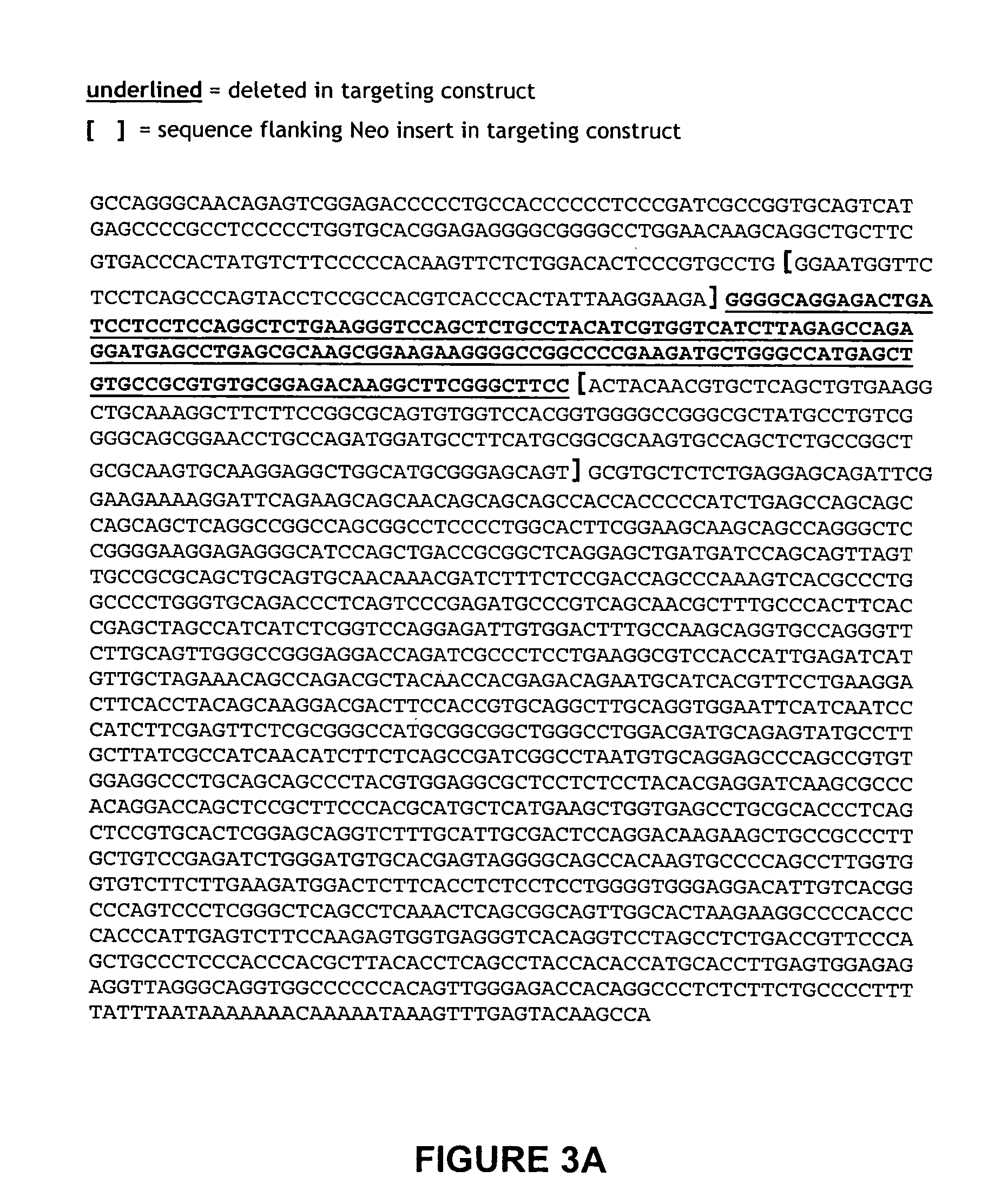Transgenic mice containing retinoid X receptor interacting protein gene disruptions
a technology of retinoid x receptor and protein, applied in the field of transgenic animals, can solve the problems of impaired glucose tolerance, tissue damage, organ damage,
- Summary
- Abstract
- Description
- Claims
- Application Information
AI Technical Summary
Benefits of technology
Problems solved by technology
Method used
Image
Examples
example 1
Targeting Construct for LXRB Gene
[0201] To investigate the role of genes encoding LXRB, disruptions in LXRB were produced by homologous recombination. More particularly, as shown in FIGS. 3A-3B, a specific targeting construct having the ability to disrupt or modify genes, specifically comprising SEQ ID NO:1 was created using as the targeting arms (homologous sequences) in the construct, the sequences identified herein as SEQ ID NO:4 and SEQ ID NO:5.
example 2
Generation of Transgenic Mice
[0202] The targeting construct was introduced into ES cells by electroporation and chimeric mice were generated. ES cells derived from the 129 / OlaHsd mouse substrain were used to generate chimeric mice. F1 mice were generated by breeding with C57BL / 6 females. F2 homozygous and heterozygous mutant mice were produced by intercrossing F1 heterozygous males and females. The resulting transgenic mice were analyzed for phenotypic changes as shown in the examples set forth below.
example 3
[0203] Total RNA was isolated from the organs or tissues from adult C57BL / 6 wild type mice. RNA was DNaseI treated, and reverse transcribed using random primers. The resulting cDNA was checked for the absence of genomic contamination using primers specific to non-transcribed genomic mouse DNA. cDNAs were balanced for concentration using HPRT primers.
[0204] RNA transcripts were detectable in all tissues analyzed: brain, cortex, subcortical region, cerebellum, brainstem, olfactory bulb, eye, heart, lung, liver, pancreas, kidneys, spleen, thymus, lymph nodes, bone marrow, skin, gall bladder, urinary bladder, pituitary gland, adrenal gland, salivary gland, skeletal muscle, tongue, stomach, small intestine, large intestine, cecum, testis, epididymis, seminal vesicle, coagulating gland, prostate gland, ovary and uterus.
PUM
| Property | Measurement | Unit |
|---|---|---|
| concentrations | aaaaa | aaaaa |
| nucleic acid | aaaaa | aaaaa |
| length | aaaaa | aaaaa |
Abstract
Description
Claims
Application Information
 Login to View More
Login to View More - R&D
- Intellectual Property
- Life Sciences
- Materials
- Tech Scout
- Unparalleled Data Quality
- Higher Quality Content
- 60% Fewer Hallucinations
Browse by: Latest US Patents, China's latest patents, Technical Efficacy Thesaurus, Application Domain, Technology Topic, Popular Technical Reports.
© 2025 PatSnap. All rights reserved.Legal|Privacy policy|Modern Slavery Act Transparency Statement|Sitemap|About US| Contact US: help@patsnap.com



